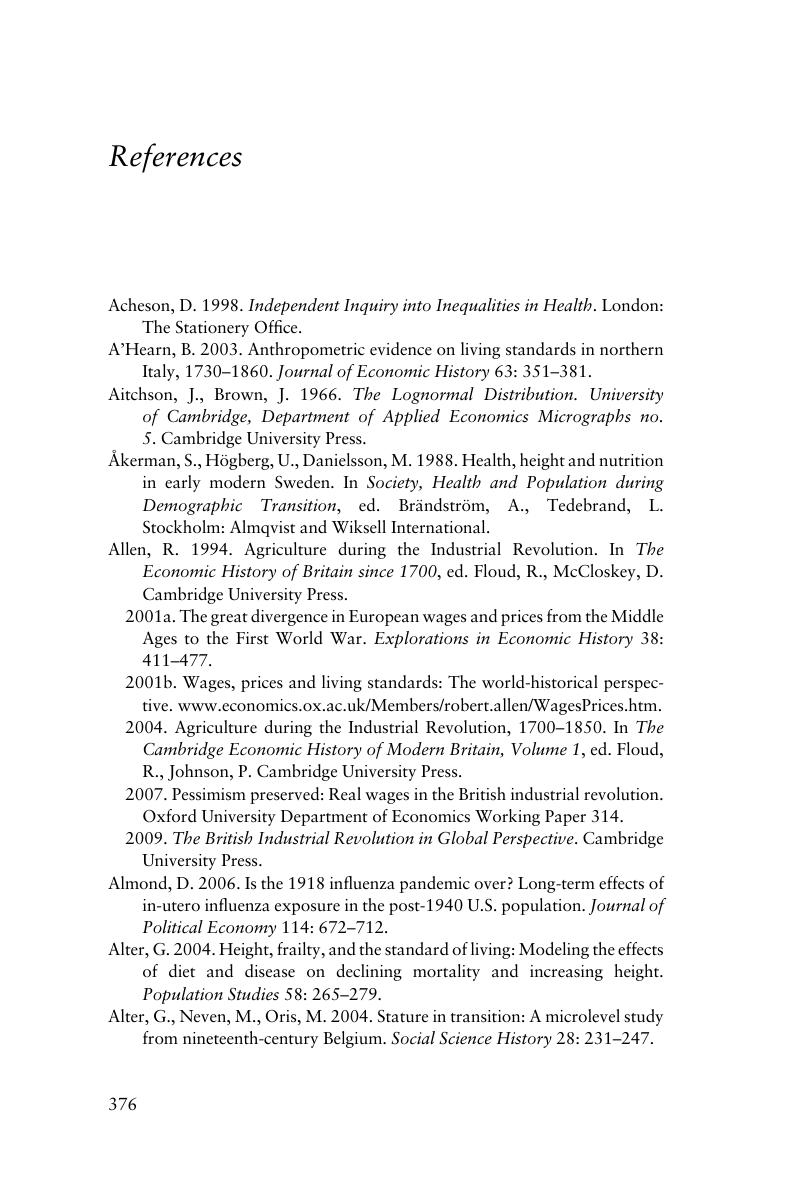Book contents
- Frontmatter
- Contents
- List of figures
- List of tables
- Acknowledgements
- 1 Our changing bodies: 300 years of technophysio evolution
- 2 Investigating the interaction of biological, demographic, and economic variables from fragmentary data
- 3 The analysis of long-term trends in nutritional status, mortality, and economic growth
- 4 Technophysio evolution and human health in England and Wales since 1700
- 5 Height, health, and mortality in continental Europe, 1700–2100
- 6 The American experience of technophysio evolution
- 7 Conclusion
- References
- Index
- References
References
Published online by Cambridge University Press: 05 June 2012
- Frontmatter
- Contents
- List of figures
- List of tables
- Acknowledgements
- 1 Our changing bodies: 300 years of technophysio evolution
- 2 Investigating the interaction of biological, demographic, and economic variables from fragmentary data
- 3 The analysis of long-term trends in nutritional status, mortality, and economic growth
- 4 Technophysio evolution and human health in England and Wales since 1700
- 5 Height, health, and mortality in continental Europe, 1700–2100
- 6 The American experience of technophysio evolution
- 7 Conclusion
- References
- Index
- References
Summary

- Type
- Chapter
- Information
- The Changing BodyHealth, Nutrition, and Human Development in the Western World since 1700, pp. 376 - 422Publisher: Cambridge University PressPrint publication year: 2011



